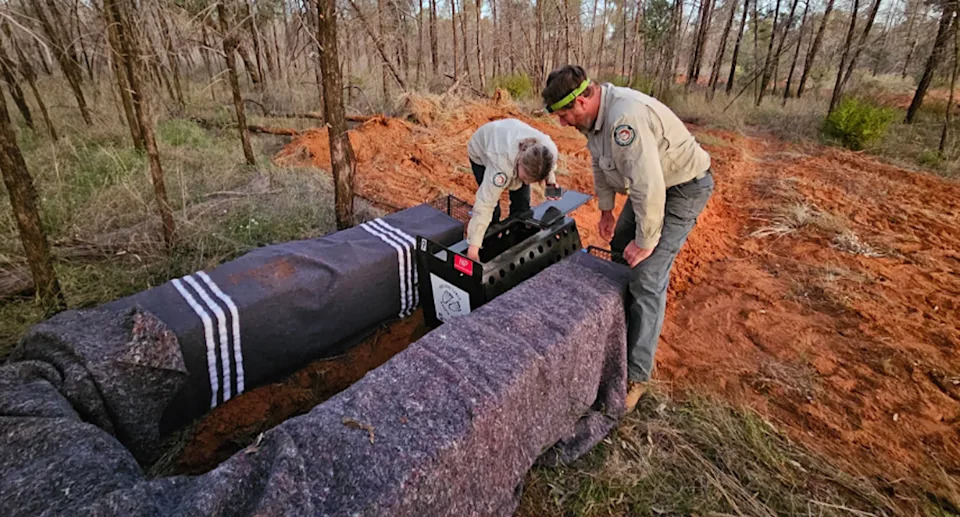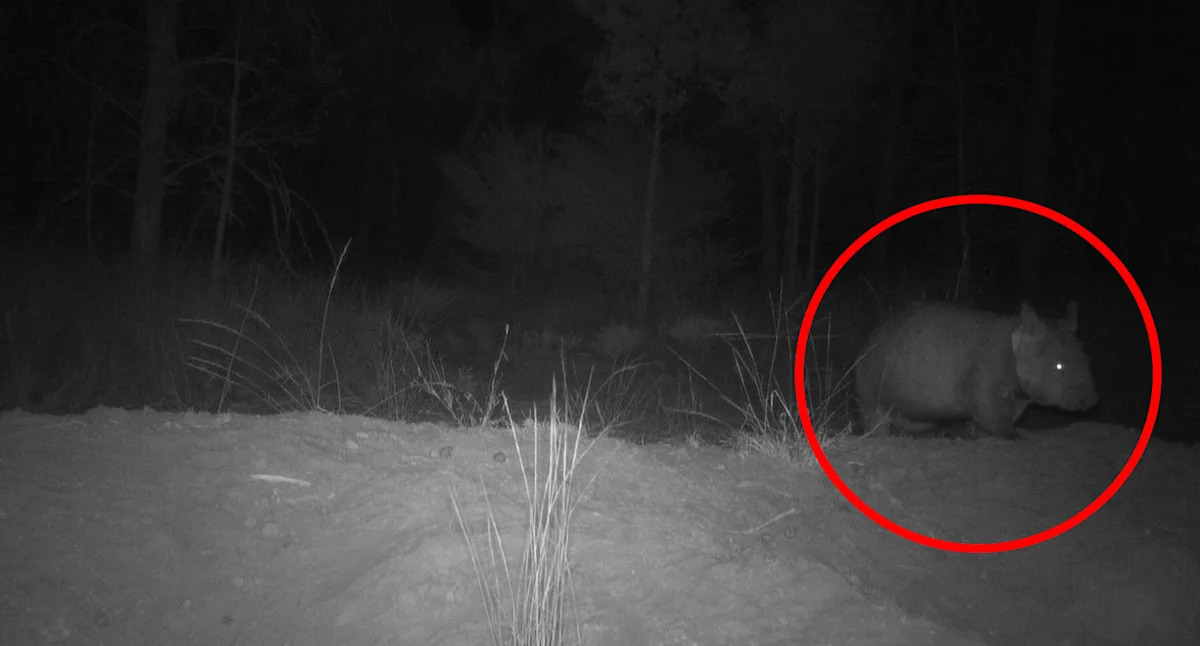Three bumps found in a Queensland wombat’s pouch mark a new era for the species as they signify the first wild-born and bred joeys in a new rehabilitation site for northern hairy-nosed wombats.
Once common across eastern Australia, there were only 35 northern hairy-nosed wombats left in Queensland in the 1980s after pests and land clearing destroyed much of their habitat.
However, tireless efforts from wildlife rangers saw the species hauled to a new area last year, where predator-proof fencing, water infrastructure, remote bush cameras and starter burrows have been built to give it the best chance of re-establishing itself.

The joeys haven’t been seen directly but rangers saying the three bumps are undeniable. Source: DETSI
It was on one of these bush cameras that rangers recently spotted the bumps in a female’s pouch and rejoiced. While the three new residents haven’t been spotted directly, there is no denying they’re there, tucked away in mum’s pouch, becoming the first to be born at the new site in Powrunna State Forest, near St George in southwest Queensland.
“These babies are a clear tick of approval from the wombats, and a step closer to our goal of establishing a self-sustaining population,” Rachel Chesher, the Regional Director of Environment, Tourism, Science and Innovation (DETSI), said.
“The northern hairy-nosed wombat is among the rarest mammals in the world, so we’re committed to ensuring we keep them on the map for future generations.”
Third relocation site established for critically endangered species
Thirty-six northern hairy-nosed wombats were moved to Powrunna after others were relocated to Richard Underwood Nature Refuge in 2009, and, more recently, a population of 400 has been established at Epping Forest National Park. The short-term goal is to establish three self-sustaining colonies in the state.
Last year, Dave Harper from DETSI told Yahoo News that relocation efforts are huge every time and being able to get things moving — never mind seeing results — is wildly exhilarating.
“Whenever we capture a wombat, there is much excitement because all the effort, the planning and hard work that has gone into this project is paying off,” he said.

Last year, rangers moved northern hairy-nosed wombats to Epping Forest National Park. Source: DETSI
The biggest threat to the species now is its small population size; however, predation of wild dogs and competition for food, with eastern grey kangaroos being their big competitor, has left the wombats struggling to survive on top of the significant loss of habitat.
The joeys are an early sign of change, and once fully grown, they will be among the largest burrowing marsupials in the world. The animals, which weigh up to 30 kilograms and grow up to a metre long, will hopefully help to reproduce and strengthen the population.
Do you have a story tip? Email: newsroomau@yahoonews.com.
You can also follow us on Facebook, Instagram, TikTok, Twitter and YouTube.


